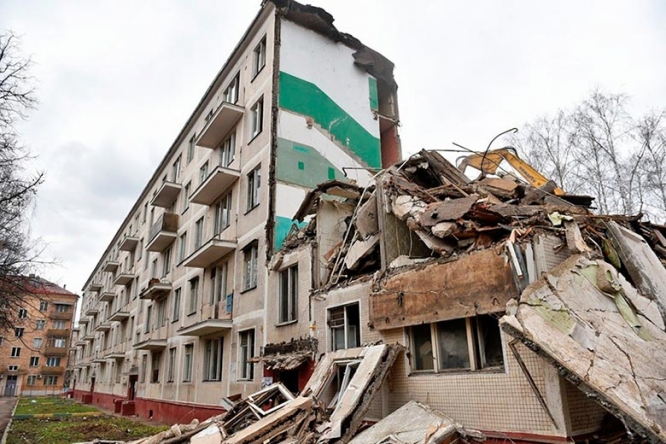Foreign architects – about the program of renovation

Foreign architects and experts who have taken part in the round table «Principles of renovation. Creation of a comfortable living environment» held as a part of the International Architecture and Design Exhibition ARCH Moscow NEXT! on May 24 shared their opinion on Moscow housing resources renovation program.
Large renewals of the city, such as capital’s renovation program, is always ambitious and complicated task consisting not only of mass construction of residential districts of the latest pattern and comfort level, but also of a social dialogue with direct participants of this process, tenants of the relocated houses. In the course of program realization, one is planning to adopt vast international methods and enlist cooperation of both Russian and Western architects.
Bart Goldhoorn, architect, publisher of «Project Russia» magazine, Netherlands:
«I, myself, have been living a lot in Moscow five-story buildings, and they have many excellent apartments. They are well decorated, they have decent sound-insulation, a man has been doing there a lot for himself for years, greenest trees already reach fifth floor there. A man has created his own microcosm there, and now he is afraid of losing it. But if that is a town-planning architecture of a high quality, one can show a clear visual graphic demonstration: that it is more convenient to live there, that his apartment would be bigger in size, that greenery would grow there over time too. And there wouldn’t be a problem to organize designer repairs there over time. If this is not explained, people will certainly fear they might be evicted now and they’d lose their tiny paradise, their property. I understand those people very good and one should work with them. Public space in five-story-building blocks is usually of a very poor organization: there are garages there, no one looks after the greenery, it could be pretty nasty within the courtyards, there are no streets there, there are few stores and parking lots. It seems to me that due to new housing estate we can create really nice urban space: where green plantations look organic and not deserted; where there are good stores and catering (or foodservice) right next to the house and one doesn’t need to get to downtown to get there.
But more importantly — quality of new houses is much higher, including everything from thermal insulation to plumbing fixture. All architectural standards are far better now than they used to be back then when those houses have been built.»
Fadi Jabri, partner of Nikken Sekkei architecture firm, Japan:
«Moscow is a megalopolis with dwelling space and transport network both actively developing. Talking about new housing estates, I can share my Tokyo experience, where this topic is urgent today. Both lodging and other functions are in great request there — inside, houses have very good infrastructure for residents. When we have 100 apartments, we are able to afford nice likeable hall, when we have 200 — then there is a hall and small event-room. The bigger the dwelling area, the more public space — generally, it is 5% of the total area of a house.
In Japan, every house in a new complex has concierge, a laundry-room, a supermarket, and upper floor is opened for everyone — one may gather together with friends there. Moreover, there are both a green area close nearby and parking spots, where a person leaves a car and quickly gets to the doorway.»
Markus Appenzeller, MLA+ partner, Netherlands:
«The first thing I’d like to say is that public discussions on renovation (subject) is a common thing. Any changes in the city (or of the city) cause reaction of its residents, and particularly now it is important to realize how and according to what rules one could detect a public dialogue, and start up renovation process. It is absolutely obvious these houses are falling into decay soon, and those are five-story buildings we are talking about today. Tomorrow we would have to think of nine-story ones.
In contrast to renovation in Moscow, where the State takes all the resettlement obligations upon itself, in almost all such cases one has to draw in private business. We see it very important that all architects are going to compete in a contest for best models of new housing estates — it will allow one not to create some sort of universal scheme, but rather a series of approaches and solutions. We would like it to be not some kind of new abstract Moscow for abstract residents, but a finished model related to urban and historical conditions.»
- Tags:
- competitions |
- renovation |
- urban design




